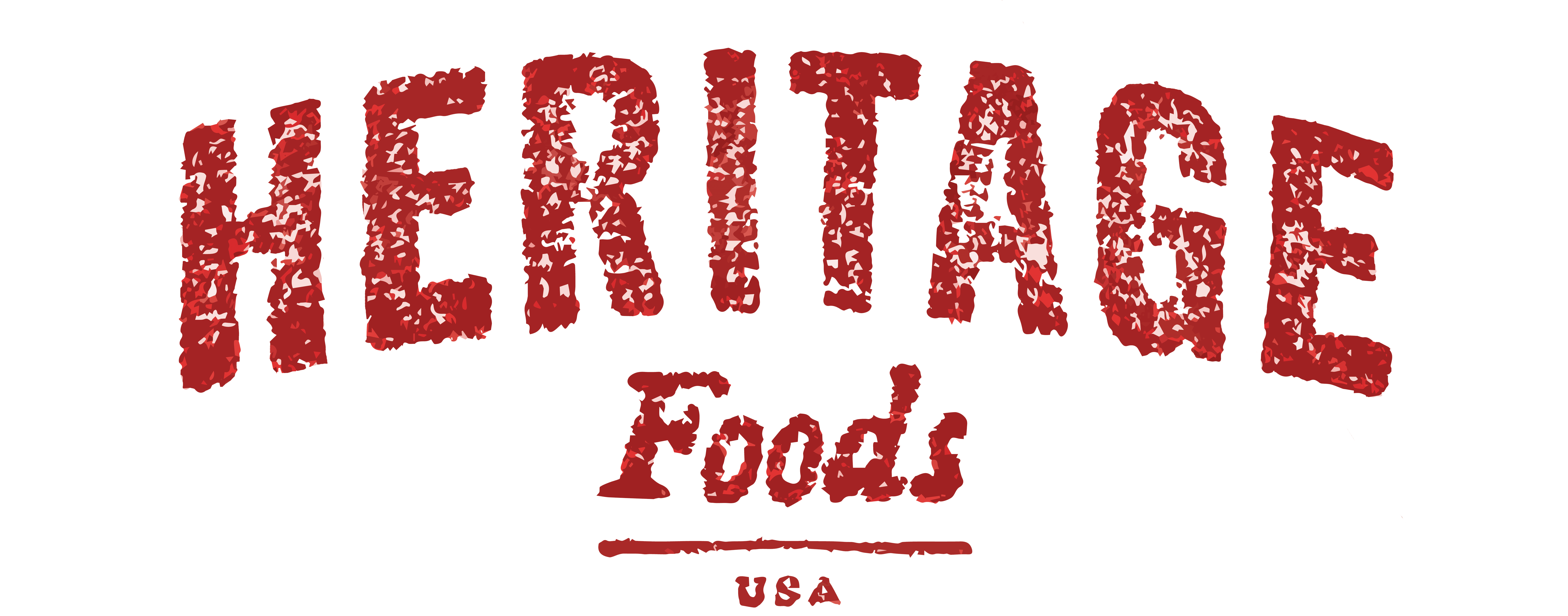
Heritage Foods Celebrates the 5th Annual #HeritageBreedsWeek
All week long, The Livestock Conservancy is raising awareness about endangered heritage breeds of farm animals with the 5th annual Heritage Breeds Week. No one knows this mission better than Heritage Foods, or our poultry farmer Frank Reese.
SUNDAY 5/19
We started the week off by featuring Frank and three of the turkey breeds he raises at Good Shepherd Poultry Ranch in Lindsborg, Kansas.

Frank and his flock of Bronze turkeys, a breed on watch by the Livestock Conservancy.

The Narragansett turkey is named for the Rhode Island Bay where it was first developed. It descends from the turkeys brought by English settlers to America in the 1600s. The American Poultry Association recognized the Narragansett in 1874. This breed is on watch by the Livestock Conservancy.

The Bourbon Red Turkey originated in Kentucky Bourbon Country in the late 1800s. The Bourbon Red variety was recognized by the American Poultry Association in 1909. This breed is on watch by the Livestock Conservancy.
MONDAY 5/20
Today we feature two of our rare pig breeds!

The Gloucestershire Old Spot is a threatened British breed. Nicknamed “orchard pig”, these white pigs with big black spots were developed on fruit orchards, where they gorged themselves on fallen fruit and other treats. Their backyard grazing lifestyles led to the development of their oversized floppy ears, which protect their eyes during foraging and enhance their sense of smell. Craig Good of Good Farms in Manhattan, KS (the little 🍎) raises our Old Spots.
The Red Wattle was the first breed sourced at Heritage Foods and is still a threatened breed. It is believed to have come to America’s shores in the mid 1700s from New Caledonia where it populated the backyards of New Orleans’ homes. Today our Red Wattle pigs are raised by Larry and Madonna Sorell on Lazy S. Farm and 40+ Amish families in La Plata, Missouri.
TUESDAY 5/21
Today we feature the French Dewlap Toulouse Goose, raised by Frank Reese and on watch by the Livestock Conservancy.

The original Foie gras goose, this was the goose of wealth and royalty, praised for the large amount of meat and delicious fats they produced. It has a grey back, grey neck a bright orange bill with a pure white underbelly. Known for its extra large size and heavy feathers it also has a Dewlap, a pendulous skin appendage that develops under the throat of the goose — very unique trait to the Toulouse.
WEDNESDAY 5/22
Today we feature one of the rarest breeds we carry at Heritage, the Aylesbury Duck. Their numbers are critical according to the Livestock Conservancy, which is why we must eat them to save them! Here we see them enjoying a dip with their friends, the French Dewlap Toulouse Geese we featured yesterday. We thank Frank Reese for raising these critically endangered ducks!

The Aylesbury Duck reached its peak popularity in the late 1800s when thousands of ducklings were sent from the town of Aylesbury to London and served at the top restaurants of the day. Since then, the breed was crossed with other breeds like the Pekin, which fared better in industrial settings. If it were not for a few dedicated farmers who kept it pure, it is likely the breed would have disappeared for good.

THURSDAY 5/23

⠀⠀⠀⠀⠀⠀⠀⠀⠀
The Dorset Horn is a breed of sheep that spread over Dorset, Somerset, Devon, and most of Wales during the 1700s. Once popular with English aristocracy, the Dorset Horn has seen a steady decrease in population since the inception of industrialized agriculture and is still threatened to this day.
⠀⠀⠀⠀⠀⠀⠀⠀⠀
The Tunis breed (light brown faces) has an incredible history, originating in Tunisia and reputed to be more than 3000 years old. John Adams mentioned the breed in his diary in 1782 noting its exceptional taste. Thomas Jefferson ordered a herd be imported from Tunisia because he loved them so much. George Washington bred them too.

The Jersey Giant was bred in the 1890’s by the Black Brothers as a very large roasting chicken for the New York market. The Jersey Giant was created as a replacement for turkey that easily fit into a New York City oven. It is still the largest of all domesticated chickens.

Photo Credit: Jim Turner
The Plymouth Barred Rock is now a recovering breed, but very difficult to find with authentic genetics. The Barred Rock is the foundation of the poultry industry and was raised by the millions from 1870 -1950. They remained king of the industry until they were replaced by the industrial Cornish. They say the original Barred Rock has never been beat in a tasting contest. As an animal it is hearty, tough and reliable as well as beautiful to look at.

New Hampshire chickens are red feathered chickens, a desired trait which farmers started to select for in the 18th Century. It was not until the early 20th Century that this breed was distinguished from the Rhode Island Reds. New Hampshires are renowned as a dual-purpose chicken, excellent egg layers and meat producers.

Follow along here, on our Instagram or Facebook to see the other breeds we feature all week! You can participate by tagging your own photos with #HeritageBreedsWeek, and learn more by visiting the Livestock Conservancy's International Heritage Breeds Week page.

